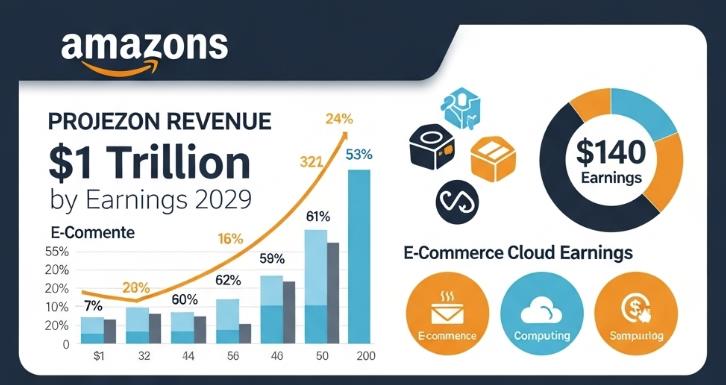
Amazon might be one of the most misunderstood names in big tech right now. Every time the conversation hits megacaps, it’s always Nvidia, Apple, Meta, or Microsoft grabbing the spotlight. But beneath the noise, Amazon is quietly building out something a little different. This is not just a retailer anymore. This is a machine.
Q1 2025 revenue came in at $155.7 billion. That’s up 8.6% from last year. But that’s not the story. AWS revenue hit $29.3 billion, climbing 17% year over year. The ad business did $13.9 billion, also up 19%. These are not just side hustles. These are serious cash engines that now account for a growing chunk of Amazon’s profit.
The company’s full-year free cash flow for 2024 was $38.2 billion. But now the trailing 12-month figure is lower, around $20.8 billion, mainly due to aggressive capex. Amazon has already guided for $100 billion in capex for 2025. Most of that is pointed directly at data centers, AI infrastructure, and fulfillment expansion. This isn’t just about more warehouses. It’s about pushing compute power closer to end users and owning the rails of the AI economy.
And yet the stock is trading at just $223 with a market cap of $2.3 trillion. The Street sees Amazon generating $1 trillion in revenue by 2029 with earnings reaching $140 billion and FCF climbing to $155 billion annually. That would put its forward valuation under 16 times 2029 earnings. For a company with this kind of moat, that’s cheap.
What’s missing is the narrative. Amazon is no longer the go-to eCommerce story. It’s also not the AI darling. It sits in this weird hybrid middle, and that’s where the opportunity lies. The stock hasn’t gone parabolic like Nvidia. It’s not caught up in regulatory drama like Apple or Google. It’s just building and waiting.
On social media, Amazon is starting to trend again. Not because of packages or Prime, but because of its infrastructure angle. Quiet money is watching how AWS fits into the broader AI and cloud wave. And there’s a growing retail crowd eyeing it for long-term rotation.
At $223, technicals show some resistance near $235, with strong institutional interest just above $210. If the Q2 earnings on July 25 confirm further margin expansion and capex execution, this could be the breakout leg into $250 and beyond. Momentum is there. The valuation makes sense. Patience is key.
Disclaimer: This is not financial advice